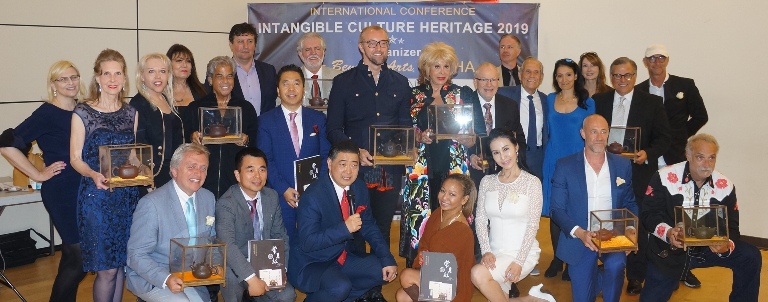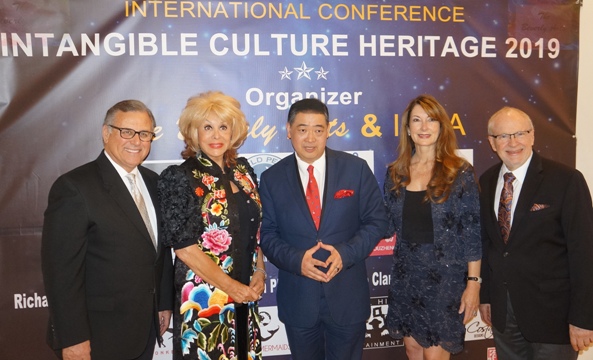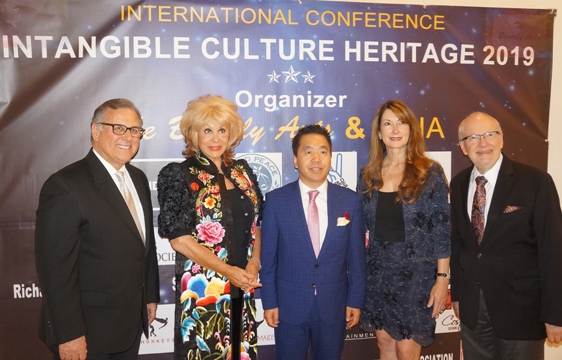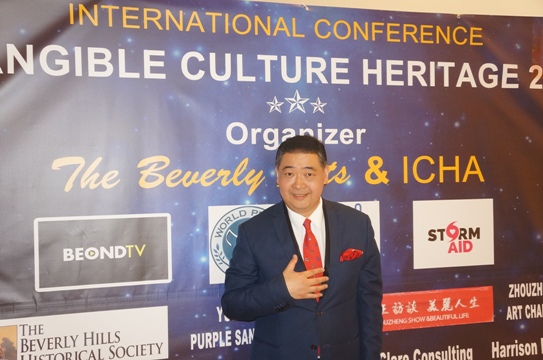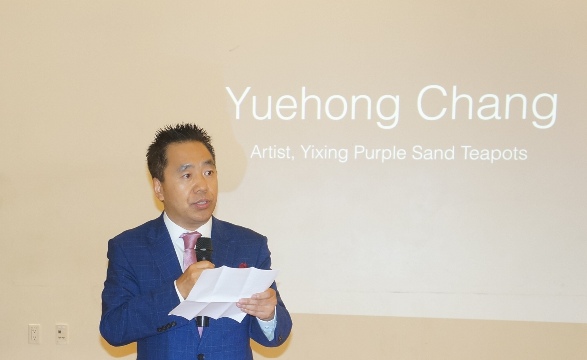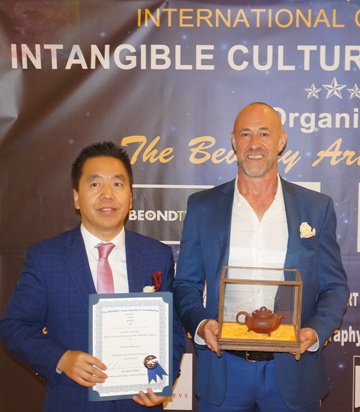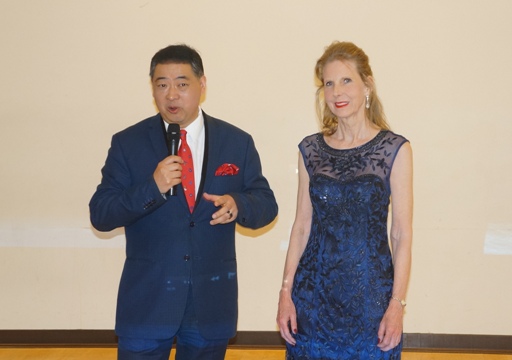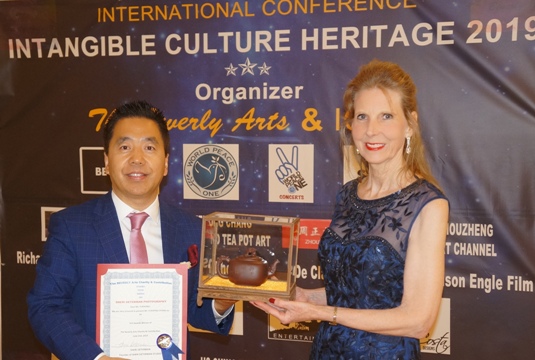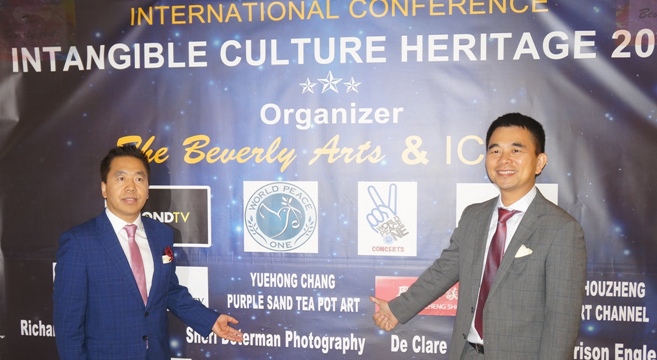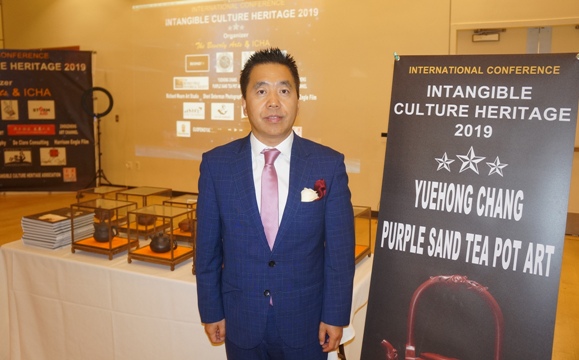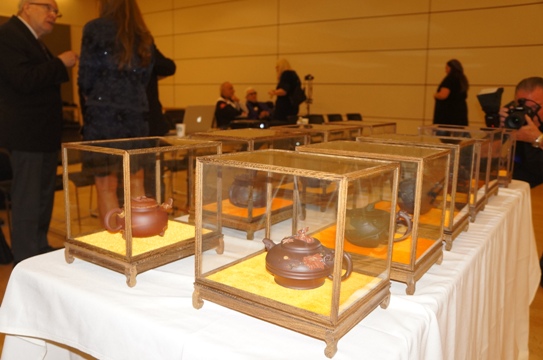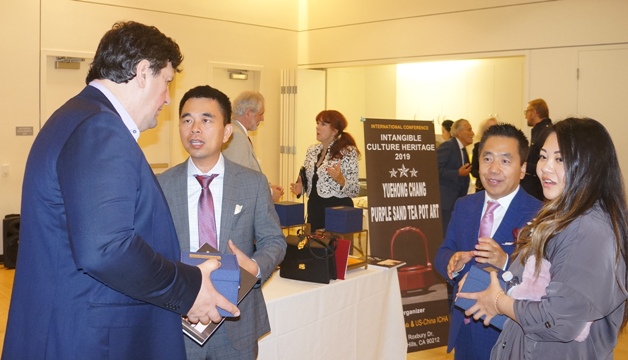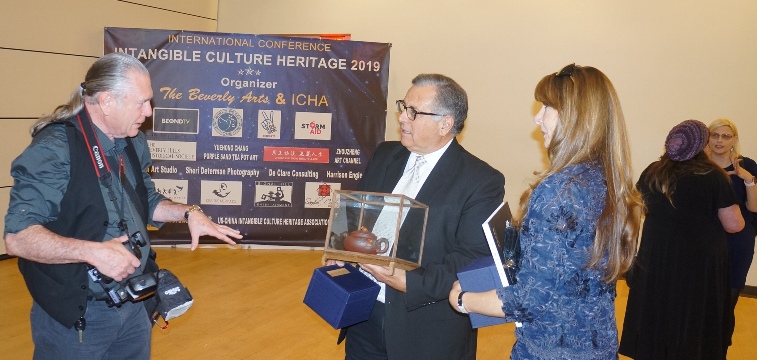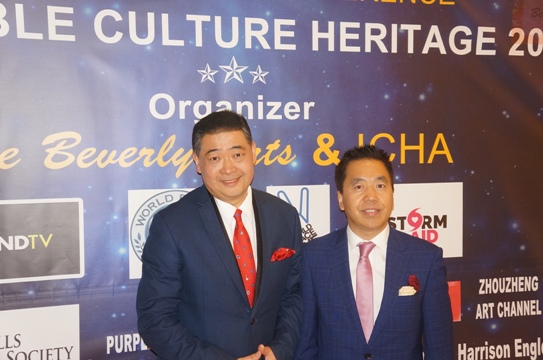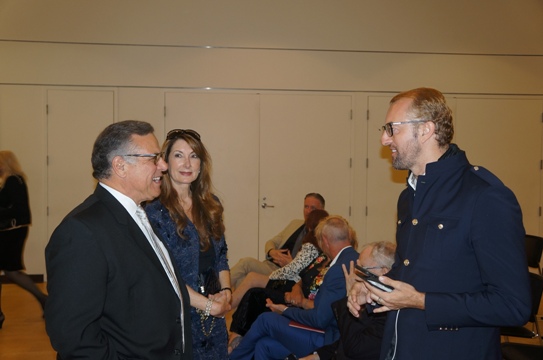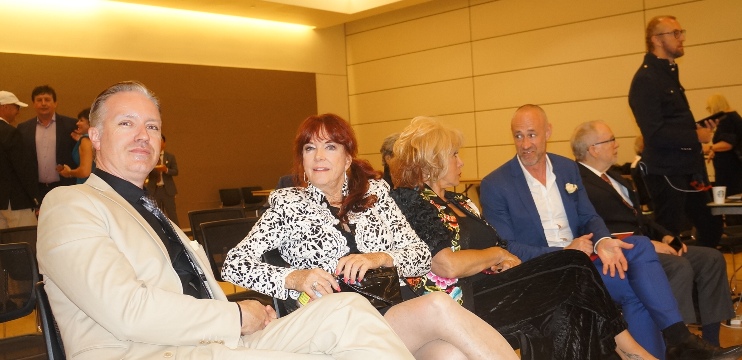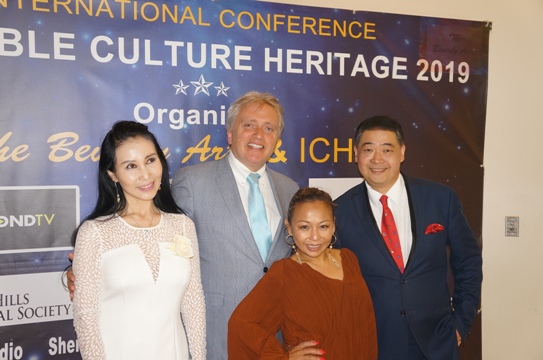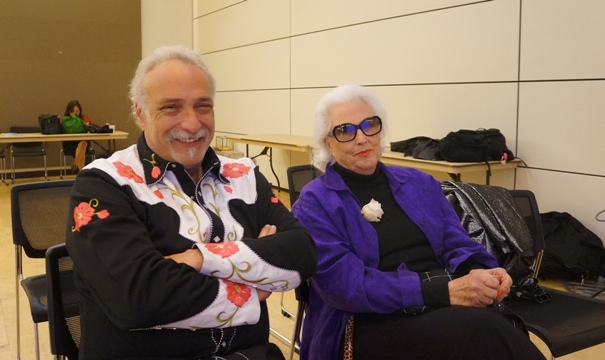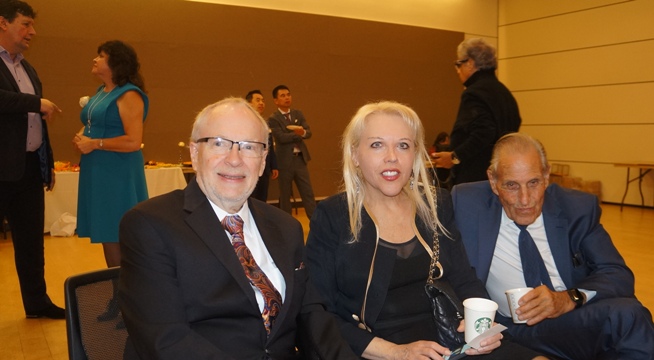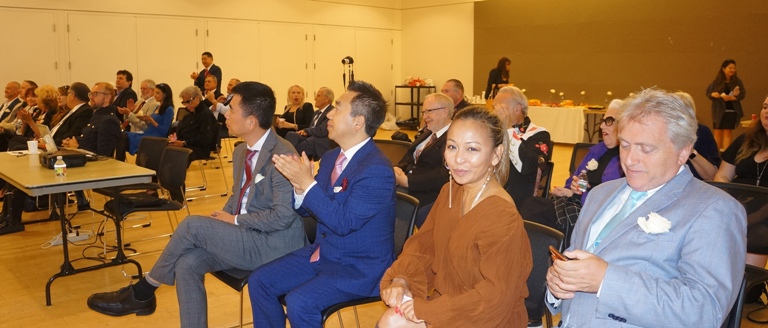Intangible Cultural Heritage International Conference in Beverly Hills
June 2nd 2017- This afternoon, The Beverly Arts and ICHA in cooperation with The Beverly Hills Historical Society and local organizations, media kicked off an international conference on Intangible Cultural Heritage about ZiSha (Purple Sand) Teapot of China at Beverly Hills Roxbury center. Joey Zhou hosts the conference.
Chinese Zisha teapot artist Chang, Yuehong introduced the Zisha teapot culture and history to about 30 scholars and artists from Beverly Hills and Hollywood.
In 2006, the production technique of Yixing purple sand teapot was listed among China’s Intangible Cultural Heritages.
The conference focuses on topics related to both tangible and intangible cultural heritage, science and indigenous knowledge on Zisha teapot as well as ancient Chinese Zisha teapot traditions and making skills that are transmitted from one generation to the next.
Chang said: “tea culture has flourished in China since ancient times, and besides tea and water, other elements, like teapot, are also involved in the tradition.
The purple sand teapot, produced in Yixing city of East China’s Jiangsu province, are considered to be the best mediums for making tea. My art studio is there.”
According to historical records, the first handmade purple sand teapot was created by a monk using local clay in Yixing in Song Dynasty (960-1279), but the craft did not flourish until the Ming Dynasty (1368-1644).
The Yixing purple sand teapot is especially good for enhancing the taste of tea because of its texture, and many tea-lovers agree that tea from a purple sand pot is better.
The purple sand teapot is a kind of ceramic ware with no glazing. The clay is highly porous but water cannot leak from it. The porous nature of purple sand allows the teapot to absorb the essence of tea, which makes the tea taste better.
To make a purple sand teapot, the material should be carefully selected and processed before it can be used. The teapot can only be made by hand using a special method.
Due to the artistic design and delicate production process, the purple sand teapot is no longer a daily necessity, but considered a work of art that is widely collectable.
Chang said: “Publicity is important for marketing, especially for an artist. Hopefully from today, my work and other great Zisha artists’ work can gain more understanding and appreciation in United States and in the world. In another word, my gift to you will become more and more valuable.”
Yuehong Chang, Zisha innovative artist, playwright, editor of the “China Collection” magazine, editorial board of “Jiangsu Ceramics” magazine, President of ICHA,Intangible Culture Heritage Association)
Richard Wearn, professor of Cal State University of Los Angeles, in his speech, he talks about his view of the intangible culture heritage:
“What meanings do we encounter when use these words? Intangible Cultural Heritage speaks to the invisibility of culture, its immaterial state, and the relationship of this state to history and retro-active organization.”
“As an artist I am interested in the interaction between collective cultural identity and the psychological manifestation of identity within the individual. The intangibility of this relationship mirrors the heightening of immaterial cultural experience.”
“To view this relationship in phenomenological terms, our being is given a congruency with external event when aligned with time. Our identities are given a shape, if you will, through an interaction with our understanding of temporality and specific event.”
The conference continued with panel discussions and presentations from philanthropists, artists, scholars on a wide variety of topics, including philanthropy, design, local history, music, etc.
Joey Zhou
Yuehong Chang
Richard Wearn
Yuehong Chang and Richard Wearn (Right)
ZiSha (Purple Sand) Teapot

